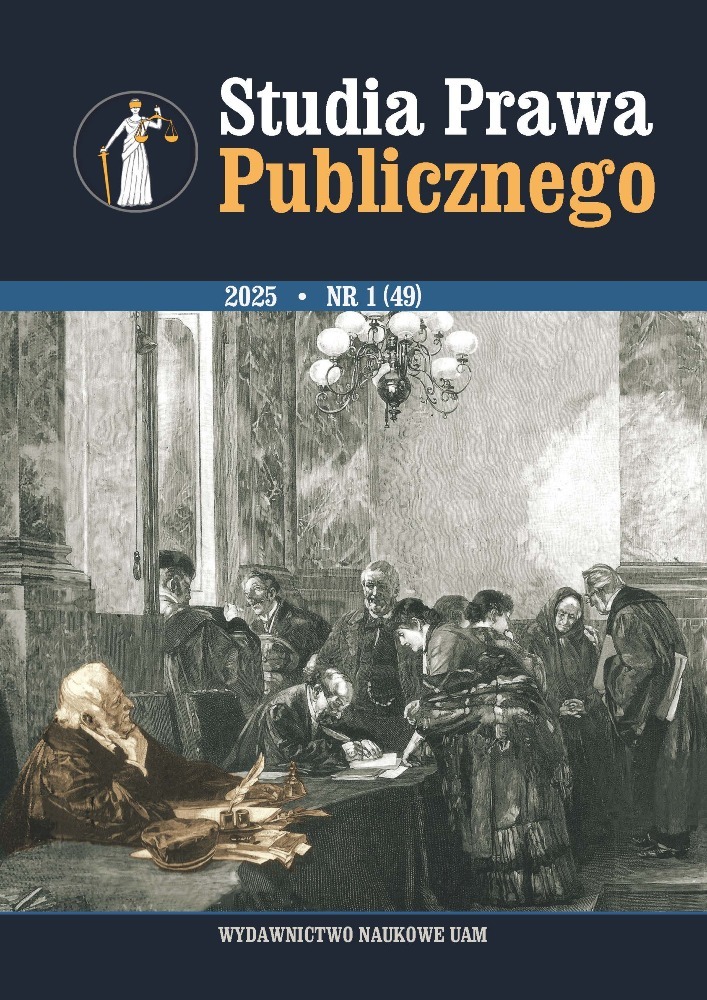Abstract
The article examines the recent changes to the EU’s Renewable Energy Directive, in short: RED. In order to accelerate the roll-out of renewable energy, the EU legislator has for the first time introduced spatial planning obligations to the RED and significantly changed the provisions on permitting. Possible conflicts between renewable energy plants, on the one hand, and environmental protection, on the other, should ideally be avoided at the planning stage. In areas designated as Renewable Acceleration Areas (RAAs), renewable energy projects shall be exempt from the requirement to carry out an environmental impact assessment (EIA) pursuant to the EIA Directive (2011/92/EU) and an appropriate assessment of the implications for Natura 2000 sites, according to Article 6(3) of the Habitats Directive. As a result, the reformed Directive prioritises the expansion of renewable energy over nature conservation. In order to fulfil the promise of accelerating the deployment of renewables, open legal questions must be clarified and Member States must use the discretion afforded to them by the Directive. Otherwise, Member State authorities will not be able to implement the measures effectively or risk being caught up in litigation against permits for renewable power plants.
References
Bampinioti S., Christakou N., Paulitz B., Pöhler L., Stevens A., Winter R., Zatsepina E., Land: A crucial resource for the energy transition, May 2023, https://www.mckinsey.com/industries/electric-power-and-natural-gas/our-insights/land-a-crucial-resource-for-the-energy-transition#/ (accessed: 25.01.2025).
Bódis K., Kougias I., Jäger-Waldau A., Taylor N., Szabó S., A high resolution geospatial assessment of the rooftop solar photovoltaic potential in the European Union,“Renewable and Sustainable Energy Reviews” 2019, vol. 114, art. no. 109309. (accessed: 25.01.2025). DOI: https://doi.org/10.1016/j.rser.2019.109309
Burgi M., Nischwitz M., Zimmermann P., Beschleunigung bei Planung, Genehmigung und Vergabe Zehn Thesen für ein ambitionierteres Sofortprogramm – Klima-Infrastruktur und Bundeswehr, “Neue Zeitschrift für Verwaltungsrecht” 2022, pp. 1321–1329.
Chamon M., The rise of Article 122 TFEU, “VerfassungsBlog,” 1.02.2023, https://verfassungsblog.de/the-rise-of-article-122-tfeu/ (accessed: 25.01.2025).
Deutinger M., Sailer F., Die Beschleunigungsgebiete nach der Erneuerbare-Energien-Richtlinie. Handlungsnotwendigkeiten und -spielräume bei der Umsetzung in nationales Recht, “Würzburger Studien zum Umweltenergierecht” no. 35, 8.02.2024.
Gil-García I., Fernández-Guillamón A., Socorro García-Cascales M., Molina-García A., A Multi-Factorial Review of Repowering Wind Generation Strategies, “Energies” 2021, vol. 14, no. 19, art. no. 6280, pp. 1–25. (accessed: 25.01.2025). DOI: https://doi.org/10.3390/en14196280
Gurreck M., Informelle Administrativnormen im Unionsrecht, Baden-Baden 2023. DOI: https://doi.org/10.5771/9783748917724
Hendrischke O., § 26 BNatSchG, in: Gemeinschaftskommentar zum Bundesnaturschutzgesetz, ed. S. Schlacke, 3rd ed., Hürth 2023.
Hendrischke O., Drewing K., Die Novelle der Erneuerbare-Energien-Richtlinie – Neue Regeln für den Naturschutz (Teil 1), “Europäisches Umwelt- und Planungsrecht” 2024, pp. 86–98.
International Renewable Energy Agency, COP28 Presidency, COP29 Presidency, Ministry of, Energy of the Republic of Azerbaijan, Government of Brazil, Delivering on the UAE Consensus. Tracking progress toward tripling renewable energy capacity and doubling energy efficiency by 2030, 2024.
Kingston S., Heyvaert V., Cavoski A., European Environmental Law, Cambridge 2017. DOI: https://doi.org/10.1017/9781139044202
Kliem C., Die novellierte Richtlinie zur Förderung erneuerbarer Energien – Kommt der Turbo für das Genehmigungsverfahren?, “Zeitschrift für Neues Energierecht“ 2023, pp. 462–468.
Kulovesi K., Oberthür S., Van Asselt H., Savaresi A., The European Climate Law: Strengthening EU Procedural Climate Governance? “Journal of Environmental Law” 2024, vol. 36, no. 1, pp. 23–42. DOI: https://doi.org/10.1093/jel/eqad034
Lau M., Wulfert K., Vaut L., Köstermeyer H., Blew J., RED: Auseinandersetzung mit rechtlichen und fachlichen Fragen, short paper from 2.05.2024, https://www.natur-und-erneuerbare.de/fileadmin/Daten/Download_Dokumente/240502_Kurzpapier_Fragestellungen_RED.pdf (accessed: 25.01.2025).
Leino-Sandberg P., Ruffert M., Next generation EU and its constitutional ramifications: a critical assessment, “Common Market Law Review” 2022, vol. 59, no. 2, pp. 433–472. DOI: https://doi.org/10.54648/COLA2022031
Römling D., Analyse der Ursachen von Verzögerungen von Planungs- und Zulassungs-entscheidungen für Erneuerbare Energien-Anlagen. Studie im Auftrag der Wissenschaftsplattform Klimaschutz, Berlin 2023, https://wissenschaftsplattform-klimaschutz.de/veroeffentlichungen/23-06-01_ursachen-verzogerungen-erneuerbare-energien-anlagen-1.pdf (accessed: 25.01.2025).
Römling D., Die Novelle der Erneuerbare-Energien-Richtlinie (EU) 2018/2001 (RED III) “Europäisches Umwelt- und Planungsrecht” 2024, vol. 22, no. 3, pp. 237–246.
Sachverständigenrat für Umweltfragen (SRU), Klimaschutz braucht Rückenwind: Für einen konsequenten Ausbau der Windenergie an Land, Berlin 2022.
Schlacke S., Expert opinion in the context of the public hearing of the Committee on Climate Protection and Energy of the German Bundestag on the Federal Government’s draft law on the implementation of Directive (EU) 2023/2413 in the areas of onshore wind energy and solar energy and for energy storage facilities at the same location, BT-Drs. 20/12785, 20/13253, 16 October 2024, https://www.bundestag.de/resource/blob/1024706/493a49b7fbb977a77a66d8fcac65279d/Stellungnahme_SV_Prof_Dr_Sabine_Schlacke_Uni_Greifswald.pdf (accessed: 25.01.2025).
Schlacke S., Plate D., Multifunktionale Flächennutzung: Potentiale und Grenzen des Raumordnungsrechts, “Zeitschrift für Umweltrecht” 2024, pp. 323–332.
Schlacke S., Wentzien H., Thierjung E., Köster M., Implementing the EU Climate Law via the “Fit for 55” package, “Oxford Open Energy” 2022, vol. 1, art. no. oiab002, pp. 1–13. DOI: https://doi.org/10.1093/ooenergy/oiab002
Ştefan O., Soft Law in Court. Competition Law, State Aid and the Court of Justice of the European Union, 2013.
Thierjung E., Erleichterungen des Ausbaus der Erneuerbaren Energien durch die EU-Notfall-Verordnung und weitere Änderungen im Umweltrecht, “Das Deutsche Verwaltungsblatt” 2024, pp. 529–563.
Thierjung E., The Legal Concept of ‘(Overriding) Public Interest’ as an Indicator for Changing E. Premises in German Energy Law with References to the European Level Focusing on Recent Developments, “Studia Iuridica” 2023, vol. 98, pp. 169–183. DOI: https://doi.org/10.31338/2544-3135.si.2023-98.14
Thierjung E., Notfall-VO: Ist der Kommissionsvorschlag eine sinnvolle Ergänzung der jüngsten Änderungen der EE-RL?, “EnergieKrise-Aktuell” 2023, art. no. 010273.
United Nations Environment Programme, Emissions Gap Report 2024: No more hot air … please! With a massive gap between rhetoric and reality, countries draft new climate commitments, 2024. (accessed: 25.01.2025).
WBGU (German Advisory Council on Global Change), Biodiversity: Act Now for Nature and Humanity, Policy Paper #13, April 2024.
WBGU (German Advisory Council on Global Change), Rethinking Land in the Anthropocene: from Separation to Integration, 2021.
Wulff J., Die Umsetzung der Erneuerbare Energien-Richtlinie (RED III) in nationales Recht, “Neue Zeitschrift für Verwaltungsrecht” 2024, pp. 368–377.
License
Copyright (c) 2025 Matti Gurreck

This work is licensed under a Creative Commons Attribution-NoDerivatives 4.0 International License.

